Please click here to open a pdf file with an explanation of the figures below
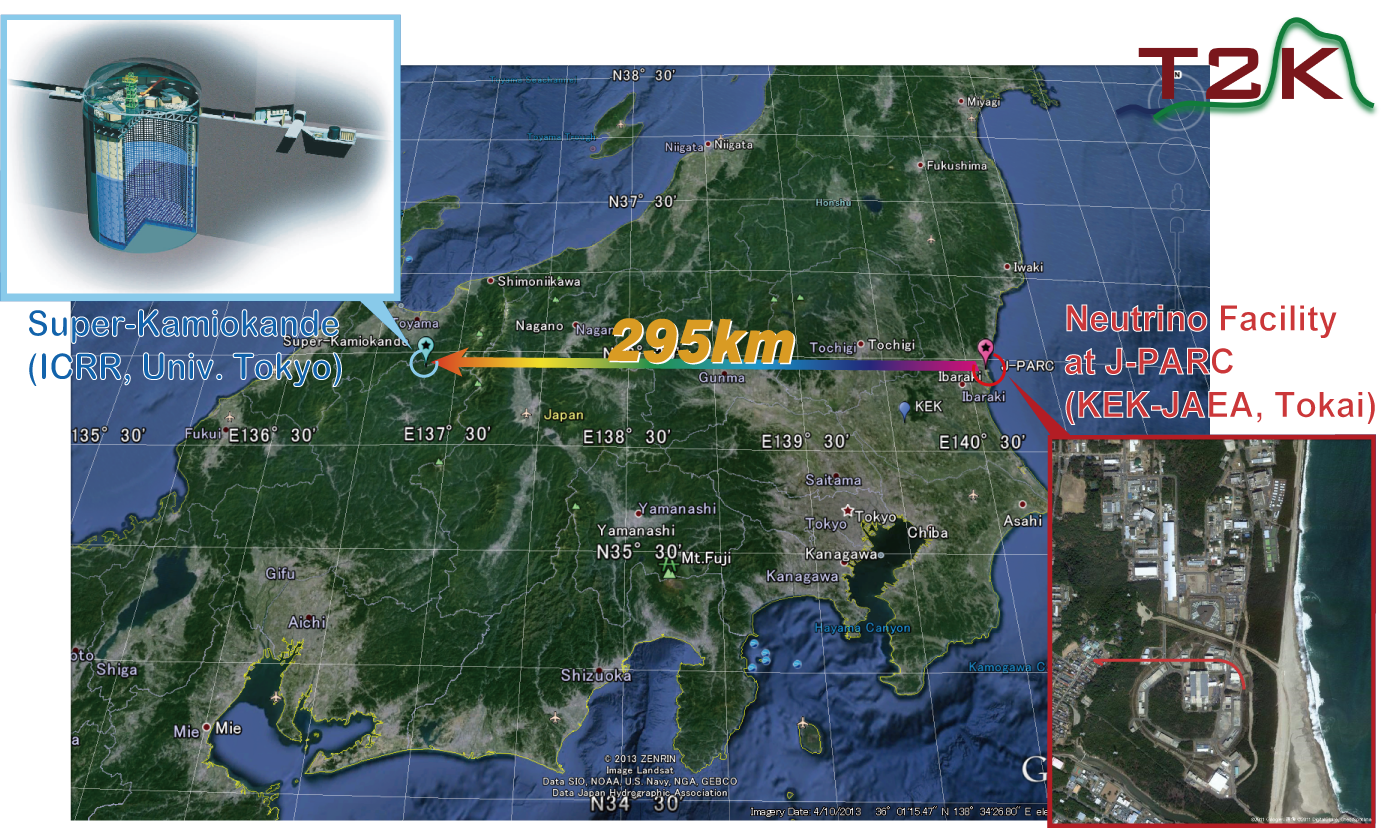
Layout of T2K
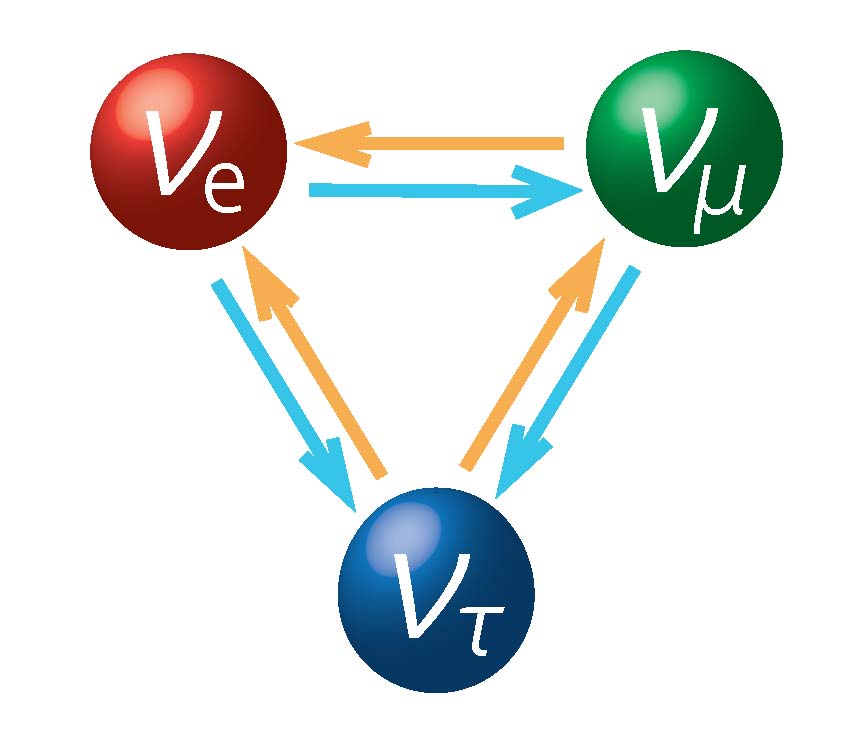
The three types of neutrino

The T2K journey
The proton beams extracted from the main ring synchrotron at J-PARC are directed in a westward direction through the T2K primary beam line. The beams strike a target composed of graphite rods (image 1 in “Images of J-PARC”), and produce a large number of positively-charged pions. The directions of motion of these pions are made to converge in the forward direction by some magnetic horns.
The pions then decay into muons and muon neutrinos in a 100-metre-long tunnel known as the decay volume (image 2 in “Images of J-PARC”). The muons and any remaining pions are stopped by a second layer of graphite, while the muon neutrinos pass through this layer. The composition of the muon-neutrino beam is measured by a near detector located 280 metres downstream of the target (image 3 in “Images of J-PARC”). Neutrino oscillations are studied by comparing the composition of the muon-neutrino beam at the near detector with its composition at Super Kamiokande, which is 295 km from the target.
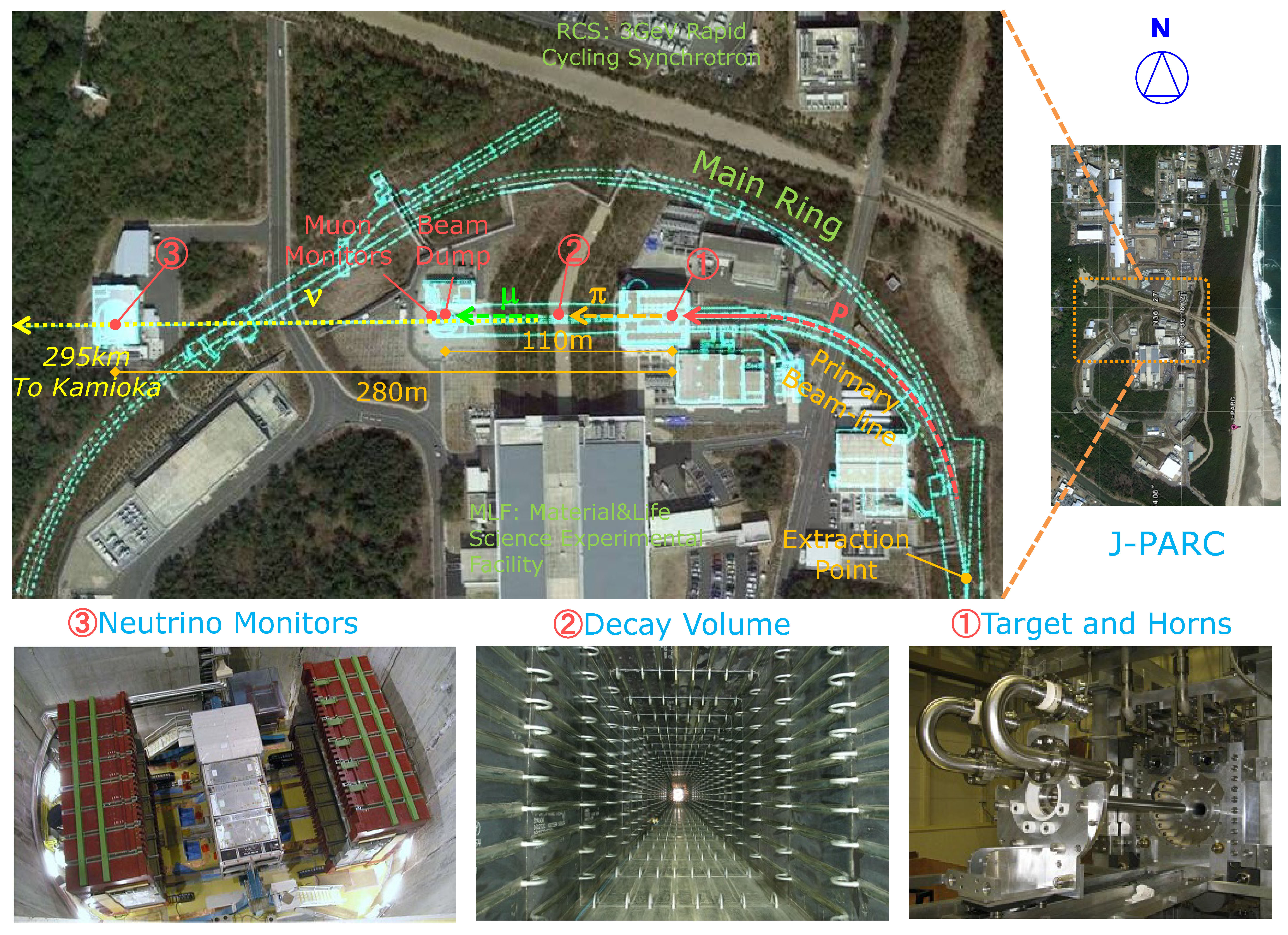
Images of J-PARC
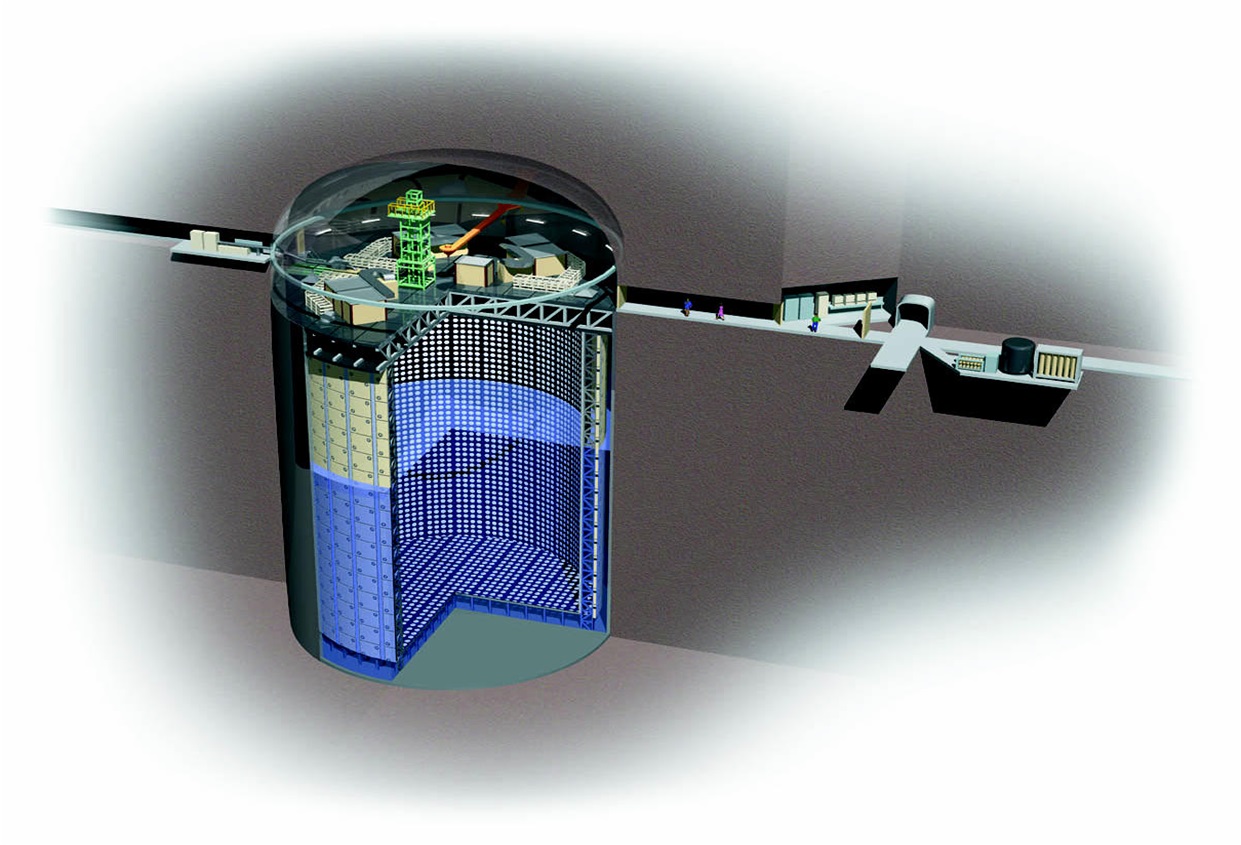
Super-Kamiokande detector
Super Kamiokande is the world’s largest underground neutrino detector, and is located 1000 metres underground in Kamioka Mine, Hida, Gifu Precture, Japan. It is affiliated with the Kamioka Observatory of the Institute of Cosmic Ray Research at the University of Tokyo. In addition to detecting T2K neutrinos, Super Kamiokande observes neutrinos produced by collisions between cosmic rays and molecules in the Earth’s upper atmosphere. It is also searching for proton decays, which have never been observed to date. Super Kamiokande consists of a large cylinder 39.3 metres in diameter and 41 metres high that contains 50,000 tons of ultra-pure water. The inner walls of the cylinder are lined with about 11,200 photomultiplier tubes to detect Cerenkov light, which is emitted when a charged particle travels faster than the speed of light in water (this is three-quarters of its speed in vacuum).
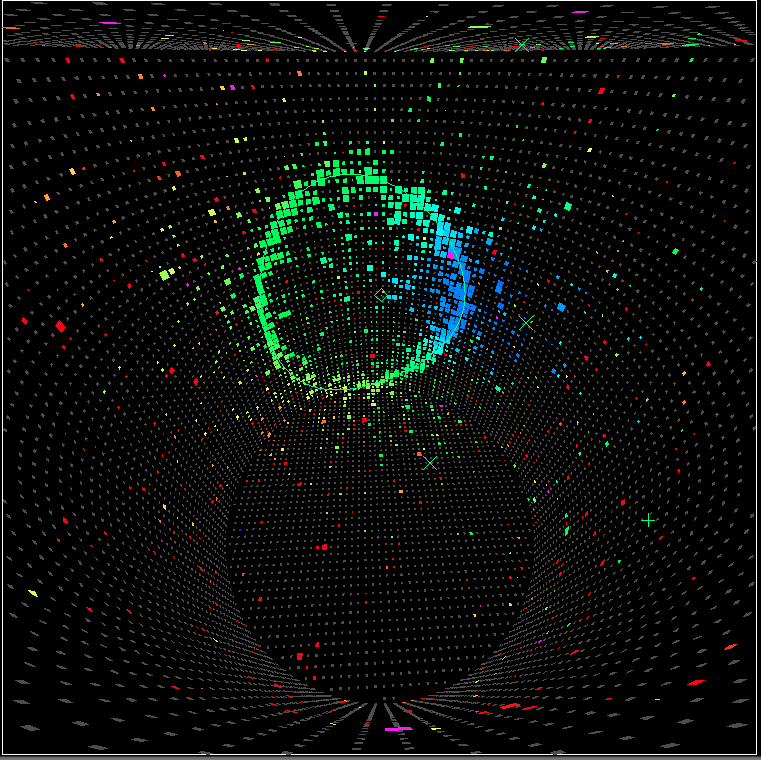
Electron-neutrino candidate
In this 3D image of the cylindrically-shaped Super Kamiokande, each coloured dot represents a photomultiplier that detected light. An electron neutrino interacts with a neutron in a nucleus of a water molecule to produce an electron and a proton. The electron often travels faster than the speed of light in water, and causes Cerenkov light to be emitted from the water atoms. This light is seen as a ring by the photomultipliers of Super Kamiokande. The image shows the first electron-neutrino candidate observed after the recovery from the earthquake on the east coast of Japan in 2011.
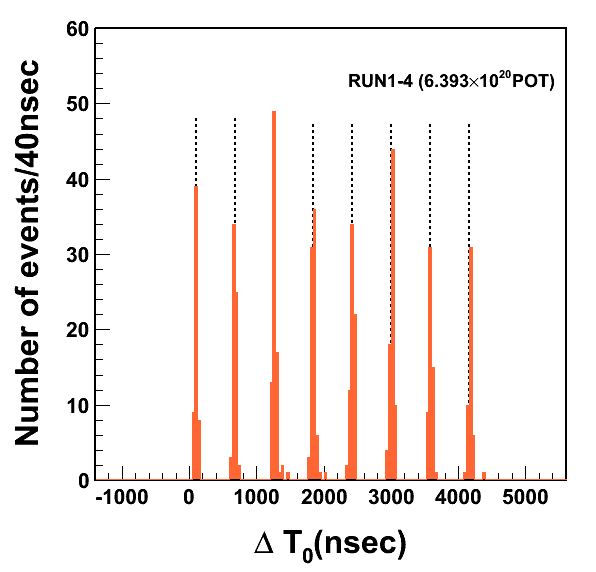
Timing of T2K beam bunches
At J-PARC, the neutrino beam is produced as a pulse every 2.5 seconds. Each pulse has 8 “bunches” of neutrinos due to the method of accelerating the proton beam. Figure 5 shows the distribution of times of neutrino events, and the bunch structure can be clearly seen (zero on the horizontal axis is the time at which the start of the pulse arrives at Super Kamiokande).
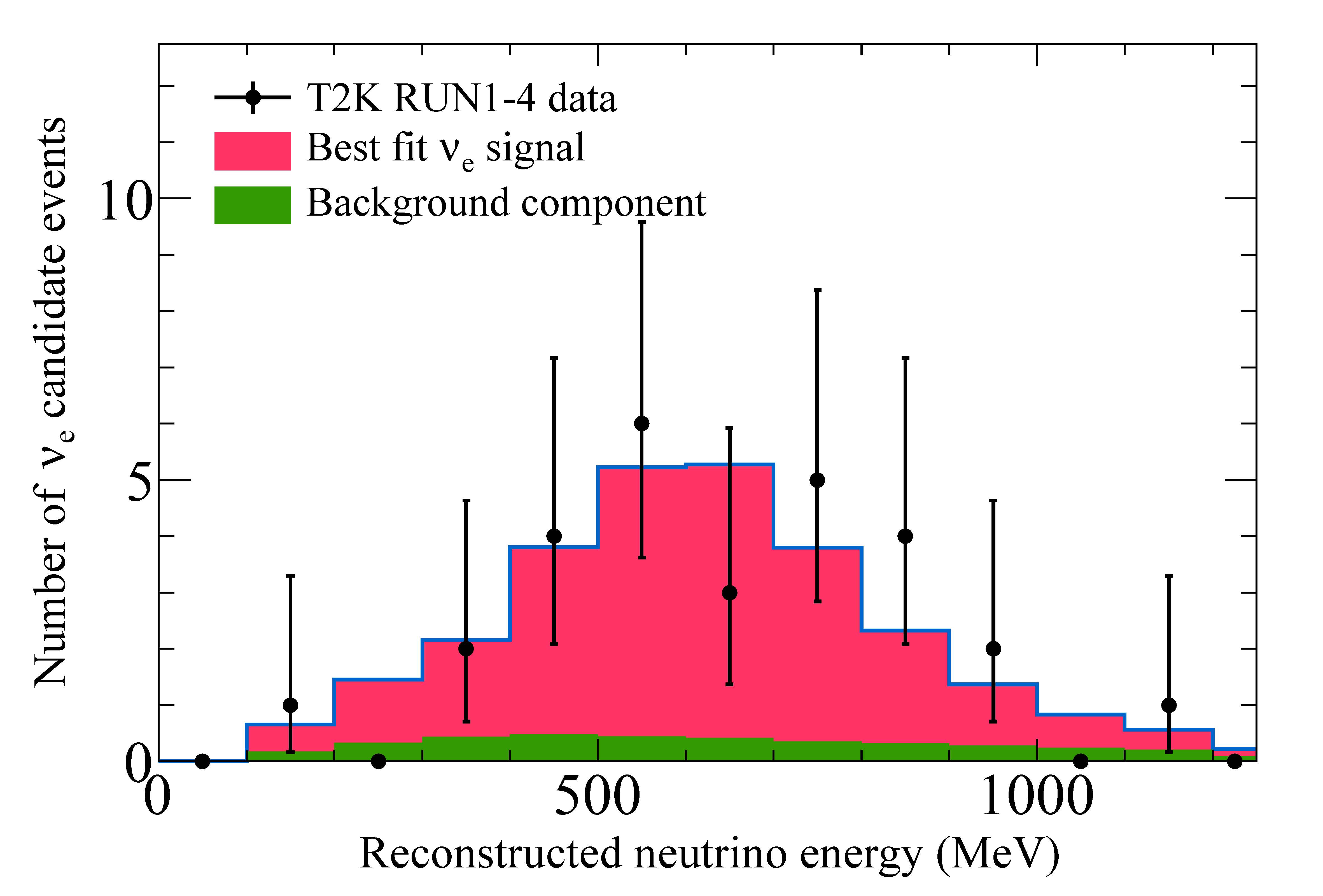
Reconstructed energy distribution of electron-neutrino candidates
The distribution of reconstructed energies of the electron-neutrino candidates in Super Kamiokande is shown in the above figure, with black points representing the data, the pink histogram representing the expected energy distribution of electron-neutrino candidates that have oscillated from muon neutrinos, and the green histogram representing the expected energy distribution of non-oscillated electron neutrinos. These non-oscillated electron neutrinos are expected to be seen in Super Kamiokande, and are due in part to a small fraction (1%) of electron neutrinos in the muon-neutrino beam produced at J-PARC.


